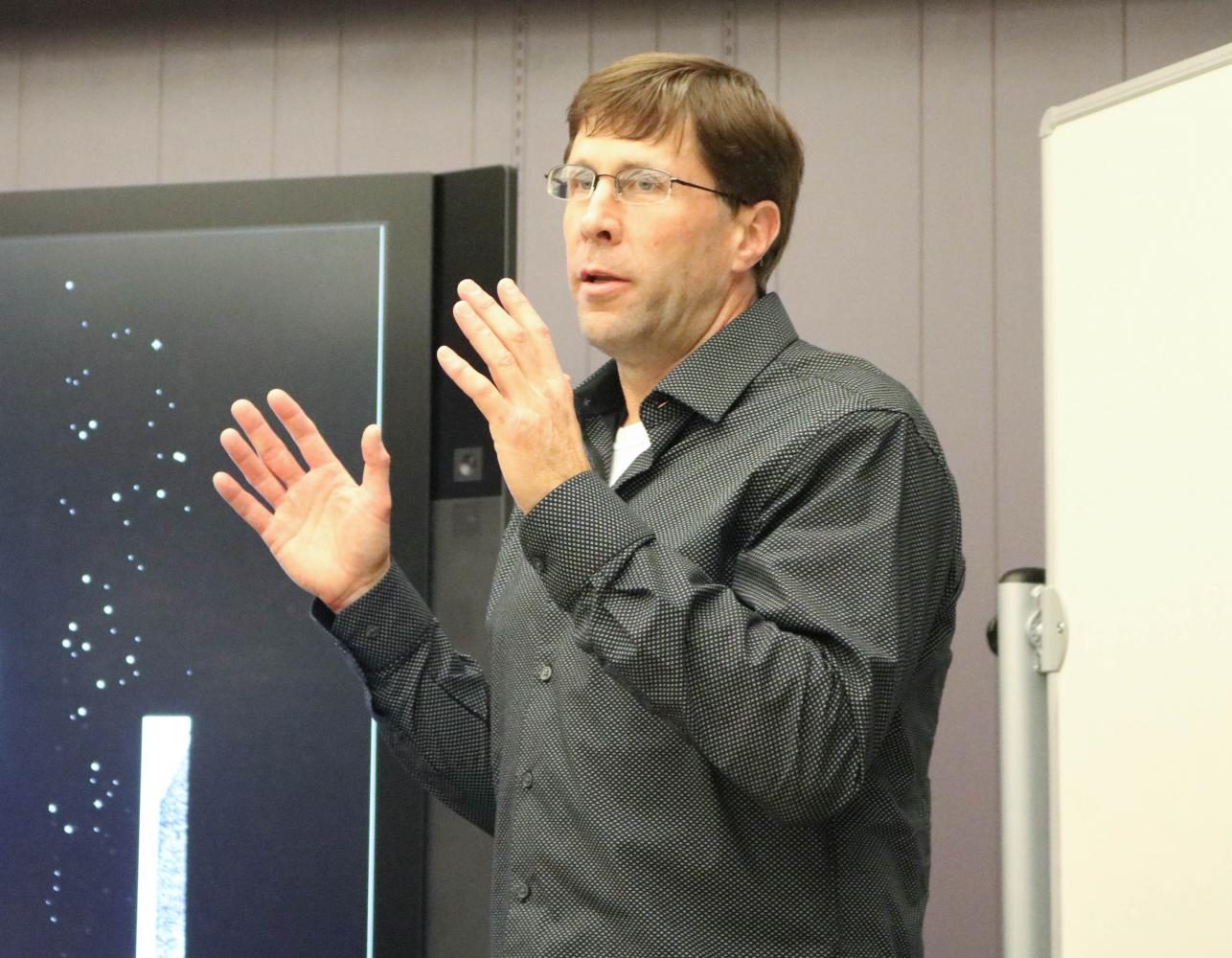Rod Library brings in the UNI “turtle guy”
Professor Jeff Tamplin, also known as the “turtle guy,” spoke in Rod Library Tuesday, Sept. 19, about his artwork and his scientific area of expertise.
Sep 21, 2017
Many students in the biology department may know Professor Jeff Tamplin as UNI’s resident turtle expert, but what they may not know is that “turtle guy” Tamplin is an illustrator in his free time.
Tamplin hosted a Q&A session on Tuesday, Sept. 19, to discuss his work at Rod Library, where his art exhibit “Creatures in Pointillism” is featured.
One of Tamplin’s students, junior chemistry education major Michael Antunez, said he wasn’t aware of Tamplin’s artistic work.
“I first learned about Tamplin after I had realized his piece of the comic cover, and I believed that this was a blown-up image of a comic book,” Antunez said. “And in fact, it was all stipple […] My first question is, ‘Where do you find the time?’”
Stippling is a technique in which images are created using small dots of varying density and value. While some may consider these creations a form of art, Tamplin does not consider himself an artist.
“I don’t call myself an artist; I’m an illustrator,” Tamplin said. “I think I have some creative side to me, but if you said, ‘Go, create an amazing painting,’ with no reference or inspiration behind it — that’s not me. I don’t do that stuff.”
Tamplin also joked about having a sour taste about the word “artist” since his college days, in which he took one art class and, after struggling due to having “creative differences” with the instructor, decided that he was not going to take another art class.
Even though Tamplin did not take any more art classes, it did not discourage him from using the technique that he had acquired back in 1989. Tamplin said he was in his early days of teaching after receiving his master’s degree and working as a DJ at a college radio station when he stumbled upon an album cover featuring a gritty face profile. Intrigued, he thought about the design’s simplicity and how he could replicate it.
“Ever since that day in 1989 I’ve never really stopped drawing like that, even though I really wish I would sometimes, because it would be a lot easier to just draw with pencil,” Tamplin said.
Tamplin went on to discuss his work, saying, “I make measurements, I look at photographs [and] I look at specimens.”
While taking on an assortment of subjects such as people, comic book covers and specimen drawings, Tamplin also prides himself on being a detail-oriented individual. However, he said it’s not without its disadvantages.
“It gets aggravating when you’re staring at this tiny little space on the paper, and you’re making these little dots that are very permanent,” Tamplin said. “And I will see a dot that I will just think, ‘This ruined the whole thing,’ and it’ll be very upsetting, especially if I spent six months on it.”
Tamplin never works on one project at a time; instead, he is usually working on six or seven pieces. Although he said that it is annoying to not finish all his artworks, he believes they will all be finished one day, perhaps after he retires.
“After being in a few of [his] lab/lectures, I can see the energy [he] put into this,” Anuntez said. “The energy and the passion that he has for science, and now the passion that [he] has for art — I think it’s stellar.”
Tamplin also has a strong passion for biology and, specifically, herpetology — the study of amphibians and reptiles. This is the primary reason why he is known as the “turtle guy” in the biology department. In addition, his research with students typically centers around turtles, such as the endangered wood turtles native to the Cedar Valley, as well soft-shelled turtles, to name a few.
Nonetheless, Tamplin has not always worked with turtles, or living creatures, as a matter of fact. While attending Augustana College, Tamplin had studied under Dr. William Hammer, a geology professor that accompanied him to Antarctica to collect reptile fossils.
On this trip, they had discovered the first dinosaur fossil in Antarctica — Cryolophosaurus ellioti, affectionately known as the Elvisosaurus. The fossil now resides in the American Museum of Natural History in New York City.
For Tamplin, the intersection between science and art has always made sense.
“[I’m] a science person who tries to think logically,” Tamplin said. “But I also have always loved art.”








